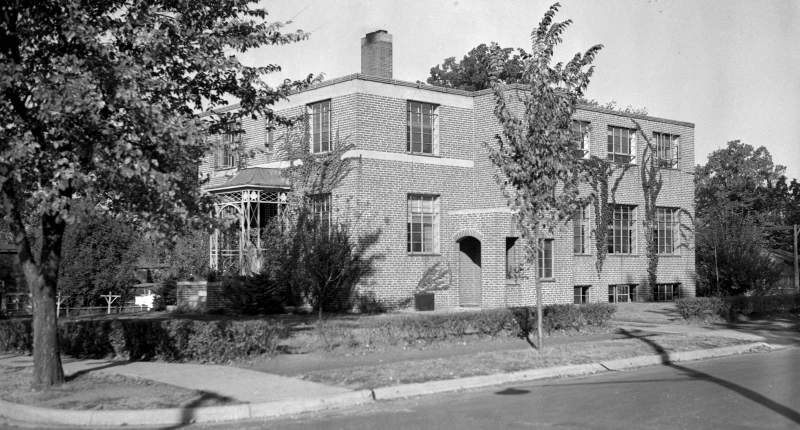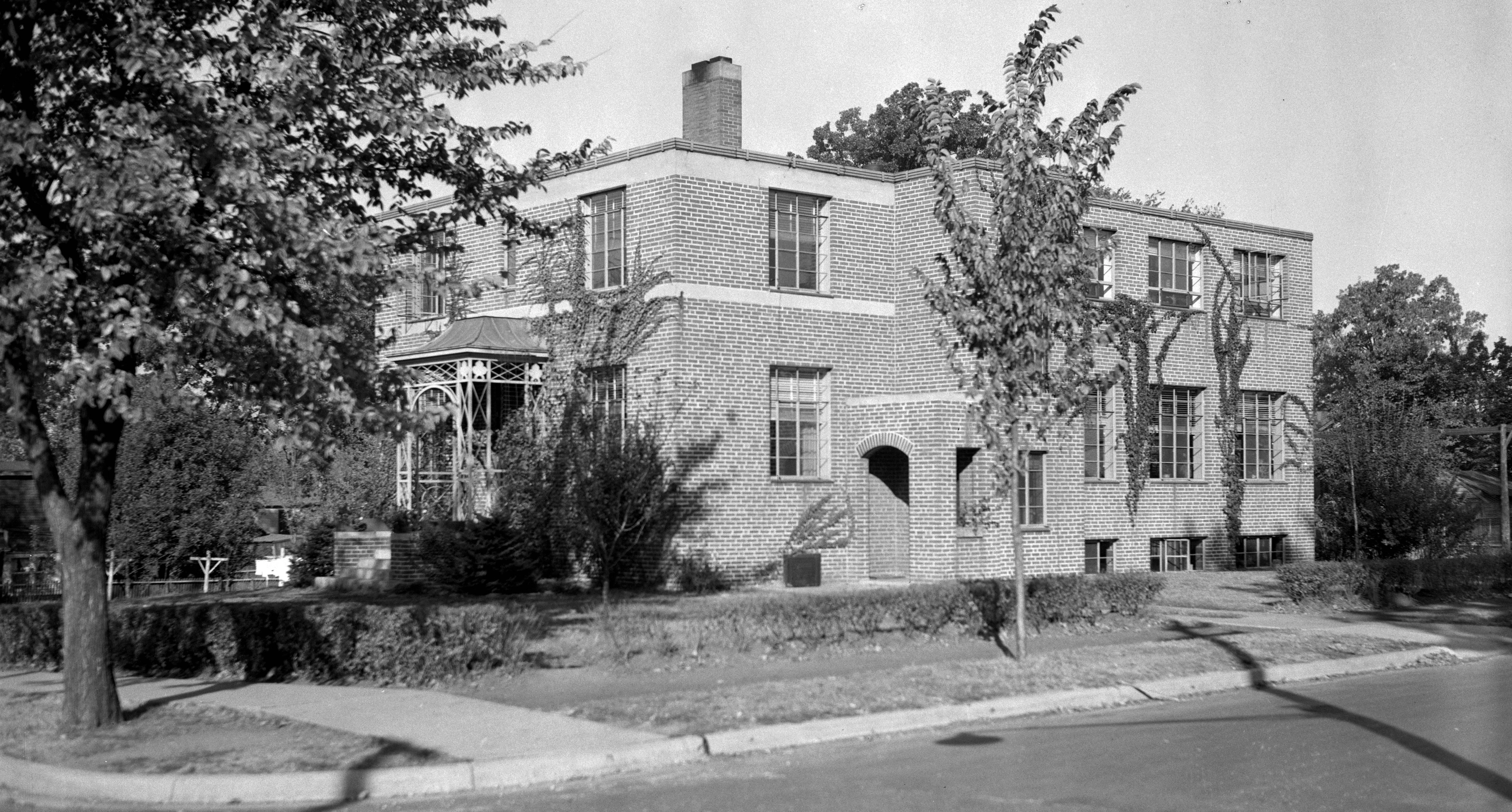The McLean County Museum of History, in collaboration with the City of Bloomington and the Illinois State The McLean County Museum of History, in collaboration with the City of Bloomington and the Illinois State Historical Society, will dedicate a new state historical marker memorializing the Booker T. Washington Home for Colored Children on Thursday, August 3, 2023, at 11 a.m.
The marker is near the intersection of W. MacArthur Ave. and S. Livingston St., across from the Butterfly Garden (former Field of Dreams). The GPS coordinates are 40.472783, -89.010379. Street parking is available on S. Livingston St., W. MacArthur Ave., and S. Hinshaw Ave., but it is limited.
Mayor Mboka Mwilambwe and Museum Executive Director Julie Emig will welcome attendees. Bill Kemp (museum librarian), Norris Porter (museum director of development), and an Illinois State Historical Society board member will share remarks from the podium before unveiling the marker. Stephanie Moore, a Home resident in the 1950s and 60s, will close out the dedication, sharing her story and the significance of this historic site.
The creation of this historical marker was made possible by community support of the Museum's 2022 Historic Marker Initiative, which has raised over $70,000 to create or refurbish 11 markers in McLean County. To learn more, please visit mchistory.org/participate/historic-marker-matching-gift-initiative.
The Booker T. Washington Home for Colored Children was first known as the McLean County Home for Colored Children, established in 1918 by Alexander and Cedonia Barker. It operated until 1969 when it merged with other, recently desegregated, local children's homes. For many years, it was the only home for African American children outside of Chicago licensed by the State of Illinois.
Before its establishment, there were two homes for displaced children in Bloomington-Normal: the Girl's Industrial Home (later renamed the Lucy Orme Morgan Home for Girls) and Victory Hall (for boys). Neither institution allowed African American children to live there. The only place in Bloomington-Normal that accepted children of color was the Soldiers' Orphans' Home (renamed the Illinois Soldiers' and Sailors' Children's School in 1931). However, only children of veterans, or as of 1907 (through 1924), children under eight who had lived in Illinois for at least four years, were accepted there.
The Barkers began the Home in a house they rented at 510 W. Jackson St. by taking in the seven children (ages three months to fifteen years) of Charles and Nellie Luster after the 1918 Flu Pandemic claimed both parents' lives. Having no biological children to care for, the Barkers continued to take in dependent or semi-dependent children needing a home.
In September 1920, the McLean County Home for Colored Children was officially established by a board of 15 white women, with the Barkers as the superintendent and matron. In December of that year, the State of Illinois granted the Home a charter.
Eventually the Barker's house on W. Jackson St. became too full, and the Home moved to a larger facility on 1203 W. Moulton St. (now MacArthur Ave.). By 1923 it became apparent that the Home would again need to expand if it was to continue operating. The Pantagraph reported on a board-proposed move to Normal in March of 1927, writing that Normal residents met the proposal with hostility, arguing "Normal has enough charitable institutions" and "did not favor making Normal "a dumping ground for such institutions." The board pivoted after the pushback and purchased two adjoining lots on Moulton St.
In 1930, the Home added two more lots, and finally, in 1935, it had raised enough funds to construct a new 54 by 32 feet, two stories tall, fireproof building to accommodate the ever-increasing number of children at the Home. Made of red brick and tile with steel beams and sashes, the building included a full basement, a double entrance (one for girls and one for boys), a common dining room and study, and two dormitories on the second floor (the girls' on the east side and the boys' on the separated west wing).
The new Home was completed in August 1936, accommodating twenty children. This was considered an amenity that offered the children who lived there "a family atmosphere instead of an institutionalized life." The new structure was built next to the old buildings, which were then torn down.
In 1942, the Home became the Booker T. Washington Home, named after the twentieth-century leader. Washington was known for advising on racial issues to Presidents Theodore Roosevelt and William Howard Taft and founding the Tuskegee Normal and Industrial Institute in Alabama. The institute was a vocational school, one of the aspects of education Washington emphasized for African Americans. Similarly, according to a 1927 Pantagraph article, the Booker T. Washington Home in Bloomington strove to teach the children living there to "look into the future with the idea of self-support."
The Home was successful because of how the children were treated—with love. Instead of a formal-looking institution, the Home was practically indistinguishable from other houses in the neighborhood, creating a warm, welcoming environment rather than a cold, sterile one.
Stephanie Moore, a Home resident in the late 50s and early 60s, was recently interviewed by the Bloomington-Normal Black History Project. When asked to reflect on her time there, Moore stated: "Well, I am grateful. I'm grateful for the upbringing I had there. The education, I felt it helped me become a well-rounded person." She continued, "I don't think there's ever been another Home like ours. It was like being at home."
The foundation of love and support established by the Barkers created that "at-home feeling" and continued after their retirement in 1927 when Napoleon and Louise Calimese took over as superintendent and matron. The Calimeses served the institution for almost thirty years, retiring on July 15, 1957. Moore lived in the Home under the care of the Calimeses and their successors, Thomas and Fannie Brown of Danville. The Browns saw the Home through its final days, merging with the Lucy Orme Morgan Home in January 1969 to form the Morgan-Washington Home.
Following social shifts and less readily available public funding, the Morgan-Washington Home again merged with Victory Hall to form Children's Home and Aid in 1980. The organization operated under that moniker for thirty-plus years until becoming a branch of BrightPoint in 2023.
The physical Booker T. Washington Home for Colored Children located at 1203 W. MacArthur Ave. (renamed from Moulton to MacArthur following the dissolution of Bloomington's Red Light district in the 1950s) was demolished in October 1983 to make way for the planned West Oakland Ave. bridge, which was completed in 1991.
Questions or for more information, contact Norris Porter, Director of Development by clicking here or Micaela Harris, Director of Communications by clicking here.

